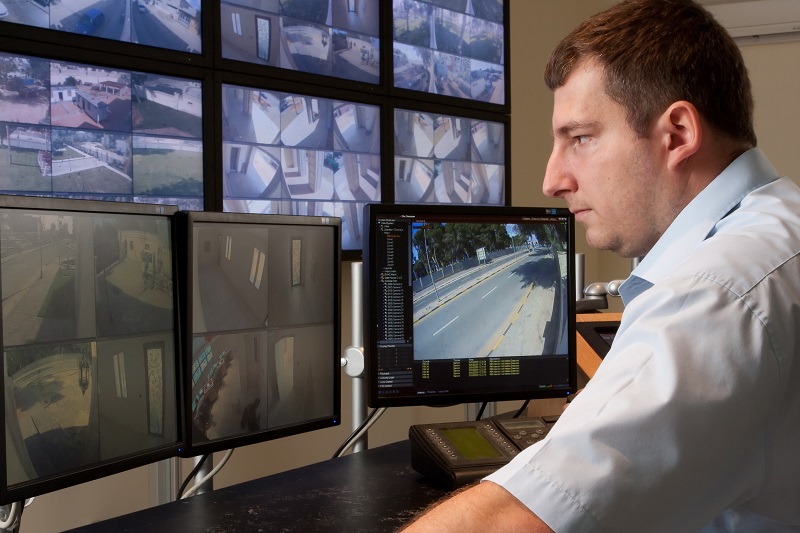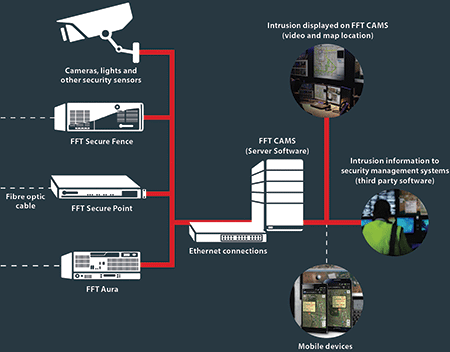The Advantages of a Fiber Optic Security System for Modern Security Solutions
The Advantages of a Fiber Optic Security System for Modern Security Solutions
Blog Article
Enhance Your Safety And Security With Advanced Fiber Optic Safety And Security Equipments
In an age where safety is vital, sophisticated fiber optic safety systems offer an engaging solution for enhancing security across various environments. What implications do these developments hold for future safety and security actions?
Benefits of Fiber Optic Security
Using the benefits of fiber optic modern technology substantially improves safety and security systems throughout various applications. One of the key advantages is the raised data transfer capability, permitting the transmission of huge quantities of data at broadband. This is specifically critical for real-time video clip monitoring, where high-resolution feeds can be sent out without latency, ensuring instant action capacities.
Furthermore, fiber optics exhibit premium resistance to electro-magnetic disturbance, which is crucial in settings with prospective signal interruptions. This integrity ensures constant efficiency in crucial safety and security procedures. Fiber optic wires are less vulnerable to touching and unapproved gain access to contrasted to conventional copper circuitry, thus boosting data stability and discretion.
One more remarkable advantage is the toughness of fiber optic systems; they are a lot more resistant to environmental variables such as moisture, temperature level changes, and destructive substances. This resilience translates to decrease maintenance prices and longer lifespans for safety installations.
Finally, the light-weight nature of fiber optic cables promotes simpler setup and transmitting, especially in intricate frameworks (fiber optic security system). Eventually, the assimilation of fiber optic modern technology right into protection systems not only reinforces security actions however additionally maximizes functional effectiveness
Key Functions to Think About
When examining fiber optic security systems, several key features should be thought about to guarantee ideal efficiency and performance. Initially, assess the system's discovery array and level of sensitivity; a comprehensive range enables keeping track of big areas, while high sensitivity ensures that also small disruptions are found without delay.
Following, think about the integration capabilities of the system. A fiber optic protection system must effortlessly interface with existing protection procedures such as cams and alarms, creating a natural safety and security network.
Resilience and ecological resistance are likewise critical functions. Guarantee that the system is designed to stand up to severe weather and potential physical dangers, as this will prolong its operational life expectancy.

Lastly, consider the scalability of the system. A robust fiber optic security system must be quickly expanding to fit future needs without substantial overhauls. By thoroughly considering these attributes, you can choose a fiber optic security option that enhances security and security in your atmosphere.
Installation Process Overview
To efficiently implement a fiber optic safety system, a systematic setup procedure is vital. This procedure starts with a detailed website assessment to figure out the specific safety demands and to identify ideal locations for fiber optic cords and security tools. Following this assessment, the setup group will certainly develop a comprehensive strategy, consisting of cable television pathways, essential tools, and compliance with regional guidelines.
Following, the installment involves laying the fiber optic cords, guaranteeing they are safeguarded from ecological elements and physical damages. Appropriate handling techniques are important, as fiber optic cables are delicate and can be conveniently harmed. After the cabling is set up, connectors and terminations are diligently finished to make sure signal honesty.
The succeeding phase contains installing safety and security devices such as cams, activity detectors, and alarm, all integrated with the fiber optic network. Rigorous screening is carried out to verify that all parts are working correctly and to make sure optimal efficiency.

Comparing Fiber Optic to Traditional Systems
The evolution of security technology has actually brought about considerable improvements in the comparison between have a peek at this site fiber optic systems and typical copper-based systems. Fiber optic systems make use of light to transfer data, offering premium transmission capacity and speed compared to their copper equivalents. This leads to boosted information transmission abilities, making optical fiber suitable for click to find out more high-resolution video surveillance and real-time surveillance.
Furthermore, fiber optic cords are resistant to electro-magnetic disturbance, decreasing the chance of signal deterioration triggered by exterior variables. This characteristic makes certain constant efficiency, even in difficult environments. In comparison, conventional copper systems are extra at risk to interference, causing potential susceptabilities in security applications.
Longevity is another advantage of fiber optic systems. They are much less susceptible to damage from ecological factors such as wetness and temperature level changes, which can endanger copper electrical wiring. Fiber optics are lighter and thinner, allowing for simpler installment and reduced physical footprint.
Nonetheless, conventional systems have a tendency to have reduced initial expenses, making them appealing for budget-conscious tasks. While fiber optic systems might require a higher ahead of time financial investment, their long-term benefits-- such as lower maintenance expenses and better reliability-- frequently surpass the initial expense, positioning them as an exceptional option for modern-day protection have a peek at these guys needs.
Future Trends in Safety And Security Innovation
Arising fads in security technology are poised to transform the landscape of surveillance and risk detection - fiber optic security system. As companies significantly encounter innovative hazards, technologies such as expert system (AI) and machine learning (ML) are becoming indispensable to safety and security systems. These technologies enhance the capacity of fiber optic systems by making it possible for real-time information analysis, recognizing anomalies, and automating responses to prospective breaches
In addition, the assimilation of the Net of Things (IoT) is transforming protection frameworks. IoT devices can provide extensive situational awareness and facilitate smooth interaction between various security components. This interconnectedness enables for extra effective surveillance and faster case feedback times.
Biometric authentication is also obtaining momentum, providing a greater level of security via one-of-a-kind physical features. As this innovation evolves, it is most likely to be integrated right into fiber optic systems for improved accessibility control.
Final Thought
To conclude, advanced fiber optic protection systems represent a substantial development in safety and security and monitoring modern technology. Their remarkable bandwidth, resistance to interference, and sturdiness facilitate trustworthy monitoring and information integrity. As these systems integrate AI and IoT capacities, they enhance the general security structure, making sure durable protection for possessions. The change from conventional systems to fiber optic options reflects a growing pattern towards extra efficient and effective security steps in an increasingly complicated technological landscape.
Report this page